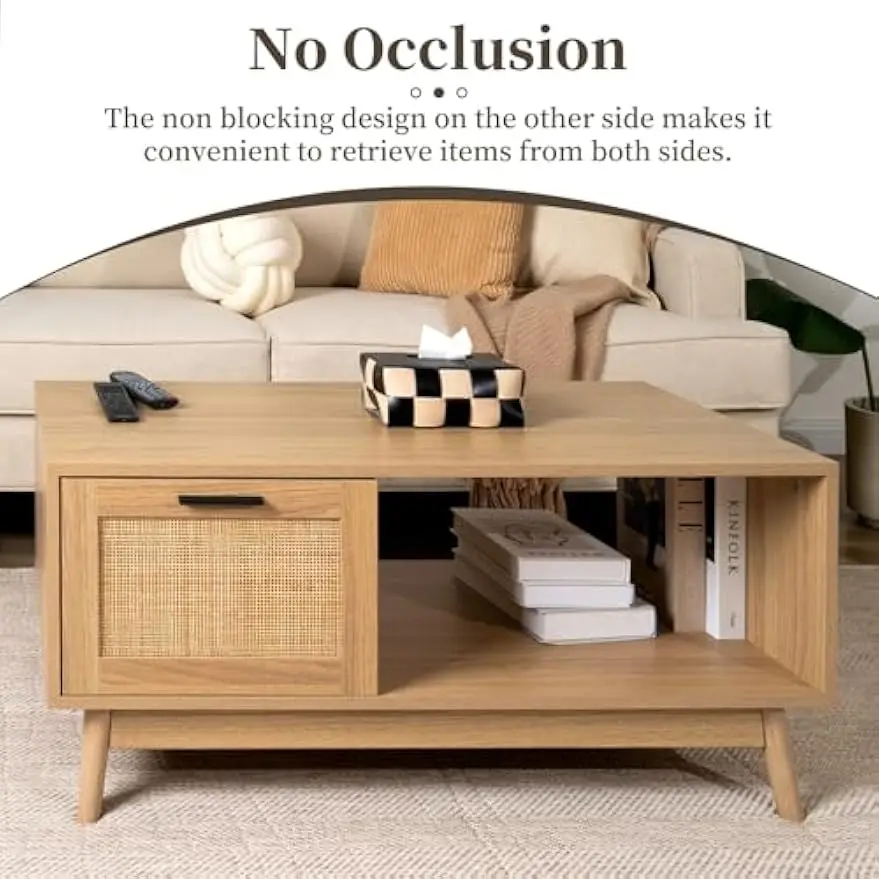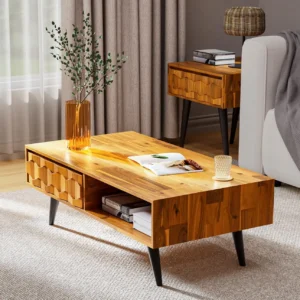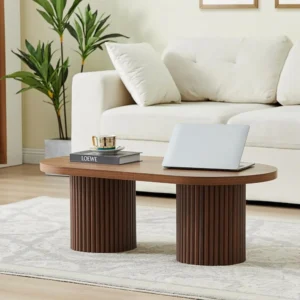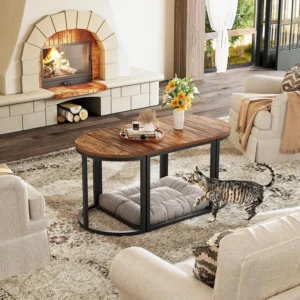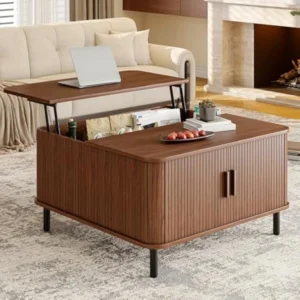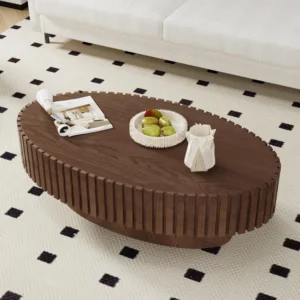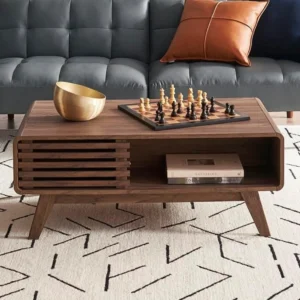Introduction to Danish Coffee Table Design
The essence of modern Danish coffee table design lies in its perfect marriage of form and function. These timeless pieces showcase clean lines, natural materials, and a minimalist aesthetic that has become synonymous with Nordic furniture design. More than just functional surfaces, Danish coffee tables serve as central focal points in living room design, anchoring the space while reflecting a commitment to craftsmanship and thoughtful design.
Danish design principles emphasize simplicity without sacrificing beauty, creating pieces that feel both contemporary and timeless. This design philosophy emerged from the mid-century modern movement and continues to influence how we approach interior design today. The enduring appeal of Danish-inspired coffee table designs speaks to their versatility and ability to complement various living spaces.
In this guide, we’ll explore:
– The distinctive characteristics that define modern Danish coffee tables
– Premium materials that contribute to their quality and longevity
– Various forms and shapes designed to enhance modern living
– How to select the perfect table for your specific space
– Styling and maintenance tips to maximize your investment
Understanding the key characteristics of Danish coffee tables will help you make informed decisions when selecting pieces for your home that balance aesthetic appeal with practical functionality.
The Essential Characteristics of Modern Danish Coffee Tables
What exactly makes a coffee table distinctly “Danish” in its design approach? Several defining features set these pieces apart:
Minimalist Aesthetic: Danish coffee tables embrace simplicity, avoiding unnecessary ornamentation in favor of clean, uncluttered lines that create a sense of visual calm. This restrained approach allows the natural beauty of materials to take center stage.
Natural Material Focus: High-quality woods form the foundation of most Danish designs, celebrating natural grain patterns and warm tones. Teak, oak, walnut, and rosewood are particularly prized for their character and durability.
Form and Function Balance: Perhaps the most defining characteristic of Danish design is the unwavering commitment to functionality. Every element of a Danish coffee table serves a purpose, with nothing included solely for decorative value.
Exceptional Craftsmanship: Attention to detail distinguishes genuine Danish pieces, evident in precise joinery, smooth finishing, and thoughtful construction techniques that ensure longevity.
Organic Influence: Many Danish designs incorporate gentle curves and organic shapes inspired by natural forms, softening what might otherwise be austere geometric lines.
Warm Modernism: While firmly modern in approach, Danish coffee tables avoid the cold, industrial feel sometimes associated with modernist furniture, instead creating a warm, inviting presence.
These Danish modern coffee table elements work together to create pieces that feel at once contemporary and timeless, explaining why these designs have remained relevant and desirable for decades, seamlessly integrating into today’s interiors.
Premium Materials: The Foundation of Danish Coffee Table Quality
The materials used in Danish coffee tables are carefully selected not just for their aesthetic appeal but for their durability and aging characteristics. Understanding these materials helps appreciate why quality Danish pieces represent a worthwhile investment.
Hardwoods
Teak: Perhaps the most iconic wood in Danish furniture design, teak offers exceptional durability due to its natural oils that resist moisture and decay. Its warm golden-brown color develops a beautiful patina over time, becoming more attractive with age. Mid-century modern teak coffee tables remain highly sought after for their durability and timeless appeal.
Oak: Prized for its strength and distinctive grain pattern, oak provides excellent structural integrity. It accepts stains beautifully, allowing for versatile finishing options from light natural tones to darker treatments that highlight its grain.
Walnut: With its rich chocolate hues and occasional purple undertones, walnut creates sophisticated, elegant pieces. Its fine grain and natural luster make it a premium choice for high-end Danish designs.
Rosewood: Though less commonly found in contemporary pieces due to sustainability concerns, vintage Danish coffee tables in rosewood are highly collectible for their deep, rich coloration and distinctive grain patterns.
Glass Elements
Many Danish coffee tables incorporate glass elements to:
– Create visual lightness
– Allow light to flow through the piece
– Provide durable, easy-to-clean surfaces
– Create interesting material contrasts
Danish designers typically use tempered safety glass for its strength and durability.
Metal Components
Metal elements in Danish coffee tables are usually:
– Understated and minimal
– Made from high-quality stainless steel, brass, or powder-coated steel
– Designed to complement rather than compete with wood elements
– Precisely crafted with clean, simple lines
Modern Danish coffee table designs often emphasize sustainability, using responsibly sourced woods and eco-friendly finishing processes that maintain the tradition of quality while addressing contemporary environmental concerns.
Form Follows Function: Coffee Table Shapes for Modern Living
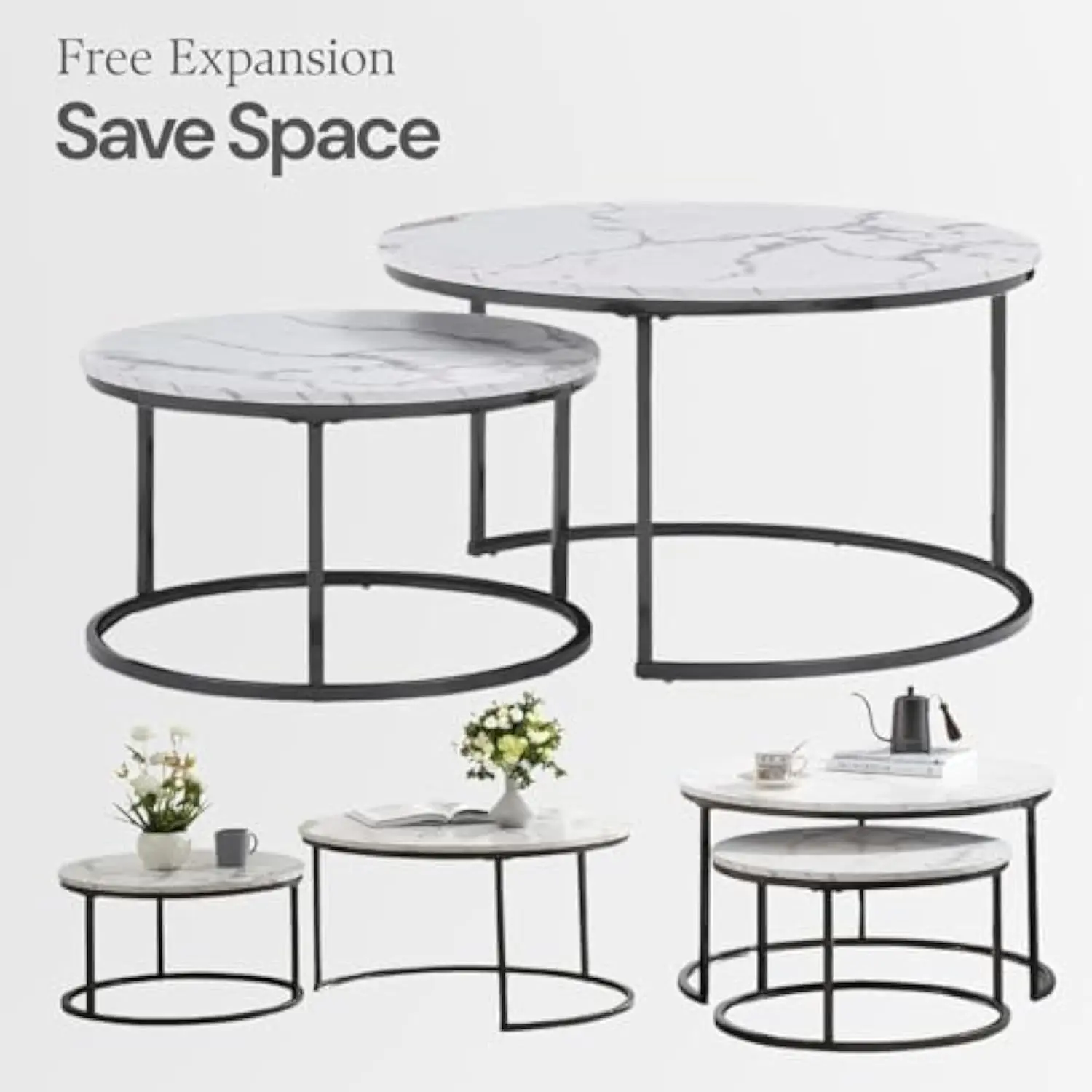
Danish coffee tables come in various shapes, each offering distinct advantages for different living spaces and needs. The form of these tables always serves a clear purpose, exemplifying the Danish design principle that function drives aesthetic decisions.
Rectangular Tables
Rectangular coffee tables remain the most popular choice for many living rooms, particularly those with traditional seating arrangements featuring a sofa and facing chairs. These tables:
– Provide ample surface area for multiple users
– Create a natural division in larger seating areas
– Often include storage solutions underneath
– Work well in rectangular rooms, echoing the shape of the space
Round Tables
Round Danish coffee tables excel in promoting conversation and flow, making them ideal for:
– Smaller spaces where corners might impede movement
– Rooms with children, as they eliminate sharp edges
– Arrangements where people gather from all sides
– Creating visual softness in rooms with many angular elements
Square Tables
Square coffee tables offer balanced proportions that work especially well:
– In perfectly square rooms
– Between sectional sofa arrangements
– When paired together to create flexible, modular surfaces
– In spaces where proportion and symmetry are design priorities
Oval Tables
Oval coffee tables combine the benefits of both rectangular and round designs:
– Providing the surface area of rectangular tables
– Offering the smooth flow of round tables
– Creating a softer profile while maintaining directional orientation
– Adding a distinctive sculptural element to the room
When selecting the right shape, consider how people move through your space, your typical activities (entertaining, family game nights, casual dining), and the proportions of your existing furniture. The perfect Danish coffee table complements your lifestyle while enhancing your room’s functionality.
Functional Features That Elevate Danish Coffee Tables
True to Danish design philosophy, the best modern Danish coffee tables incorporate thoughtful features that enhance their utility without compromising aesthetic integrity. These functional elements transform coffee tables from simple surfaces into versatile living room tools.
Integrated Storage Solutions: Many Danish designs include discreet drawers, shelves, or compartments that maintain clean lines while offering practical storage for remotes, magazines, and other living room essentials.
Multi-Level Surfaces: Tiered designs with secondary surfaces below the main tabletop provide additional display or storage space while creating visual interest through layering.
Adjustable Elements: Some innovative Danish tables feature height-adjustable tops or expandable sections that adapt to different activities, from casual dining to laptop work to entertaining guests.
Thoughtful Edge Details: Even seemingly simple elements like table edges receive careful consideration, with gently rounded profiles that enhance both safety and comfort while showcasing woodworking craftsmanship.
Removable Trays: Select designs incorporate removable tray tops that can be used for serving and then returned to the table, increasing functionality without additional furniture pieces.
Lift-top coffee tables represent one of the most practical innovations in Danish-inspired design, allowing the surface to raise to a comfortable height for dining or working on a laptop while seated on your sofa.
What distinguishes Danish functional features from those found in other furniture styles is how seamlessly they integrate into the overall design. Rather than appearing as afterthoughts or compromising aesthetic integrity, these elements enhance both the table’s visual appeal and its practical value.
Selecting the Perfect Danish Coffee Table for Your Space
Finding the ideal Danish coffee table for your living room requires thoughtful consideration of several key factors that balance aesthetics with practical needs.
Step 1: Measure Your Space Carefully
Start by determining the appropriate dimensions:
– Allow 12-18 inches (30-45 cm) between the coffee table and seating
– Ensure comfortable leg room while maintaining easy reach
– Consider clearance for walking paths around the table (minimum 30 inches/76 cm)
– Match table height with your seating (coffee tables should be at or slightly below cushion height)
Step 2: Assess Your Room Layout
Your furniture arrangement should influence table selection:
– For U-shaped seating, consider round or square tables that offer equal access
– For facing sofas, rectangular tables typically work best
– For sectionals, consider the open space shape created by the seating
Step 3: Evaluate Your Lifestyle Needs
Different households have different requirements:
– Families with young children might prioritize rounded corners and sturdy construction
– Frequent entertainers may need larger surface areas or nesting tables
– Those who work from home might benefit from storage features or lift-top functionality
– Consider how you typically use your living room (TV watching, reading, games, etc.)
Step 4: Consider Material Compatibility
Choose materials that complement your existing décor and lifestyle:
– Match wood tones with other furniture pieces for cohesion
– Consider durability needs based on household activity level
– Think about maintenance requirements that fit your routine
Following this Danish coffee table design guide helps ensure you select a piece that not only looks beautiful but functions perfectly within your specific living environment. The right table should feel as though it was chosen specifically for your space, enhancing both the room’s appearance and its livability.
Our Curated Selection: Premium Danish Coffee Tables by Design Style

At Hearth Forms, we’ve carefully evaluated and selected Danish coffee tables that exemplify the finest attributes of Nordic design. Each piece in our collection meets strict criteria for authenticity, craftsmanship, and timeless appeal.
Classic Wooden Designs
These tables celebrate the natural beauty of premium hardwoods with traditional Danish craftsmanship:
The Copenhagen: Featuring solid teak construction with tapered legs and subtly rounded edges that showcase exceptional woodworking. Its clean silhouette and warm honey tones embody classic Danish modernism.
The Aalborg: Crafted from solid oak with a distinctive wishbone-inspired base and an oil finish that highlights the natural grain. This rectangular piece offers substantial presence while maintaining visual lightness.
Glass and Wood Combinations
These designs blend materials for contemporary interpretations of Danish principles:
The Aarhus: Pairing a tempered glass top with a sculptural walnut base, this round table creates a striking visual impression while remaining functionally versatile. The transparent surface allows the base’s craftsmanship to remain visible.
The Odense: A rectangular design featuring a floating glass top above a wood shelf, connected by minimalist metal supports. This combination creates visual lightness while providing two functional surfaces.
Minimalist Statement Pieces
For those who prefer ultra-clean lines and dramatic simplicity:
The Billund: A low-profile rectangular table with hidden storage and an uninterrupted wood surface that emphasizes grain patterns and material quality.
The Roskilde: A round table with a singular pedestal base, creating a sculptural presence with maximum floor clearance and a clean profile.
Space-Conscious Designs
Perfect solutions for smaller living rooms without compromising style:
The Nyborg Nesting Set: Two complementary tables that can be separated or nested together, providing flexibility for different needs while occupying minimal floor space.
The Holstebro: A compact oval design that fits elegantly into tighter spaces while maintaining excellent functionality for everyday use.
Understanding appropriate coffee table sizes for small living rooms becomes particularly important when working with limited space, where proportions must be carefully considered.
Mid-Century Modern Solid Wood Coffee Tables, Mid-Century Modern Teak Coffee Tables
$879.95 Select options This product has multiple variants. The options may be chosen on the product pageMid-Century Modern Danish Coffee Tables, Mid-Century Modern Oval Coffee Tables, Mid-Century Modern Solid Wood Coffee Tables
$390.05 Select options This product has multiple variants. The options may be chosen on the product pageMid-Century Modern Coffee & End Table Sets, Mid-Century Modern Coffee Table Sets, Mid-Century Modern Oval Coffee Tables
Price range: $257.48 through $331.04 Select options This product has multiple variants. The options may be chosen on the product pageMid-Century Modern Lift Top Coffee Tables, Mid-Century Modern Square Coffee Tables
$454.73 Select options This product has multiple variants. The options may be chosen on the product pageMid-Century Modern Oval Coffee Tables, Mid-Century Modern Solid Wood Coffee Tables
$679.56 Select options This product has multiple variants. The options may be chosen on the product pageMid-Century Modern Solid Wood Coffee Tables, Mid-Century Modern Walnut Coffee Tables
$501.53 Select options This product has multiple variants. The options may be chosen on the product page
Danish Design for Different Living Room Styles
The versatility of Danish coffee tables allows them to enhance various interior design approaches, from strictly minimalist to eclectic bohemian. This adaptability explains their enduring popularity across diverse style preferences.
In Modern Minimalist Spaces
Danish coffee tables in minimalist design settings create a natural focal point with their clean lines and warm wood tones. They add necessary warmth to minimal interiors without disrupting the uncluttered aesthetic. In these spaces:
– Choose pieces with simple, architectural lines
– Let the natural wood grain provide organic texture
– Consider glass elements to maintain visual openness
In Eclectic and Bohemian Rooms
Danish coffee tables provide a grounding element amid more varied textures and patterns:
– The clean lines create visual balance against more ornate accessories
– Natural wood tones complement bohemian color palettes
– Their functional simplicity offers practical surfaces amid decorative elements
In Traditional and Transitional Interiors
Danish designs create elegant bridges between classic and contemporary elements:
– Their timeless qualities complement traditional furniture
– Clean silhouettes modernize spaces without clashing with traditional elements
– Wood tones can be selected to coordinate with existing traditional pieces
In Industrial-Inspired Environments
The warmth of Danish wood tables creates welcome contrast against industrial materials:
– Their organic qualities soften metal and concrete elements
– Designs with metal accents create natural connections to industrial components
– Their functionality aligns with the practical ethos of industrial design
This versatility demonstrates why Danish design has remained relevant through changing interior trends—the fundamental principles of beauty through simplicity and honest materials transcend specific style movements.
Care and Maintenance of Your Danish Coffee Table
Proper maintenance ensures your Danish coffee table remains beautiful for generations, preserving both its appearance and value. Different materials require specific care approaches:
Wood Care Essentials
- Dust regularly with a soft, slightly damp cloth, moving with the wood grain
- Clean spills immediately to prevent staining or water damage
- Apply appropriate wood conditioner or oil every 6-12 months (follow specific recommendations for your wood type)
- Use coasters for hot items and beverages to prevent heat marks and rings
- Avoid placing the table in direct sunlight, which can cause uneven fading
- Maintain consistent humidity levels to prevent wood expansion and contraction
Glass Component Care
- Clean with a quality glass cleaner and lint-free cloth
- Avoid abrasive cleaners that might scratch the surface
- Check and tighten any hardware that connects glass components regularly
- Use felt pads under items placed on glass surfaces
Metal Element Maintenance
- Dust regularly and wipe with appropriate metal cleaner as needed
- Inspect joints periodically and tighten if necessary
- For brass accents, decide whether to maintain the polished finish or allow natural patina
Understanding the specific requirements of common wood finishes for coffee tables helps determine the appropriate care products for your particular piece. Oil-finished tables generally need more frequent conditioning than lacquered surfaces but offer easier spot repair.
With proper care, quality Danish coffee tables improve with age, developing character while maintaining their structural integrity and functionality—a testament to their excellent craftsmanship and materials.
Adding the Perfect Accessories to Your Danish Coffee Table
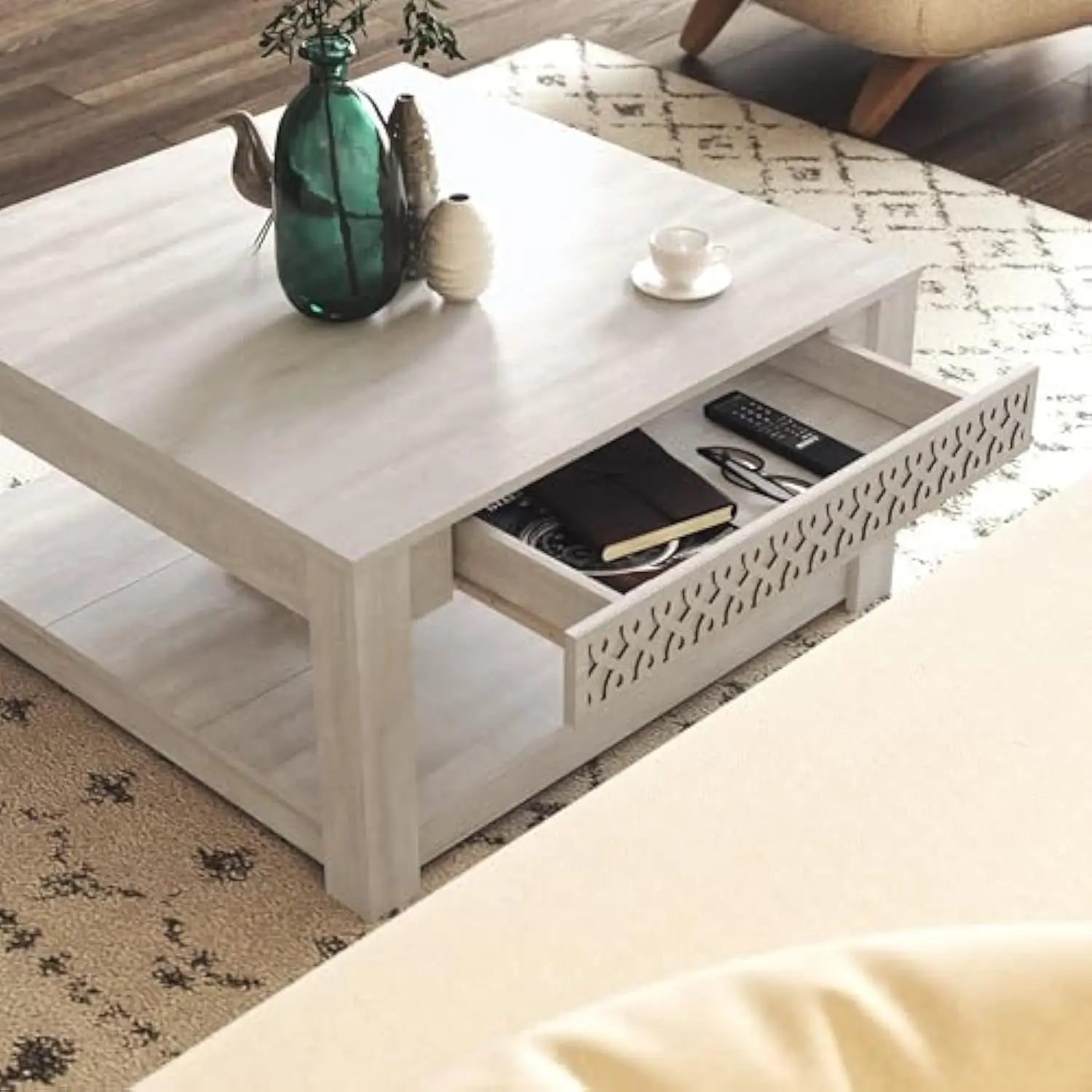
Styling your Danish coffee table enhances both its aesthetic appeal and functional value while showcasing your personal taste. The key is maintaining balance—allowing the table’s design to remain visible while adding elements that complement its clean lines.
Minimalist Decorative Elements
- A single sculptural object that echoes the organic shapes found in Danish design
- A carefully selected art book that reflects your interests
- A simple vase with structural flowers or branches
- Geometric objects in natural materials like wood, stone, or ceramic
Functional Objects with Design Appeal
- A distinctive box or container that houses remote controls
- Handcrafted wooden trays that organize smaller items
- Uniquely designed coasters that protect the surface
- Quality board games with visual appeal when not in use
Natural Elements
- Small potted plants in simple containers add life without overwhelming
- Interesting stones or wood pieces bring textural elements
- Handcrafted ceramic vessels complement the natural materials of the table
Arrangement Principles
- Create visual balance through asymmetrical groupings
- Use the rule of three for pleasing composition
- Vary heights and shapes while maintaining a cohesive look
- Leave empty space to appreciate the table’s design and maintain functionality
Remember that Danish design philosophy values restraint—fewer, more meaningful items create greater impact than numerous small accessories. Each object should earn its place through both beauty and purpose, reflecting the same design principles as the table itself.
Frequently Asked Questions About Danish Coffee Tables
What distinguishes authentic Danish design from inspired pieces?
Authentic Danish design typically features superior craftsmanship with attention to joinery details, premium material quality, and balanced proportions. While inspired pieces may capture the aesthetic, they often lack the construction quality and material integrity of genuine Danish designs. Look for solid wood construction, precision in manufacturing, and hardware quality when evaluating authenticity.
How high should a coffee table be in relation to sofa seating?
The ideal coffee table height is typically 1-2 inches (2.5-5 cm) below your sofa seat height. This ensures comfortable access while seated and maintains proper visual proportion. Most Danish coffee tables range between 16-18 inches (40-45 cm) in height to accommodate standard sofa dimensions.
Can Danish coffee tables work in small living rooms?
Absolutely. Danish design’s emphasis on clean lines and visual lightness makes these tables excellent choices for smaller spaces. Look for round or oval shapes to improve flow, consider glass elements to create visual openness, or select Danish mid-century coffee tables with built-in storage to maximize functionality without additional furniture pieces.
How do I care for teak furniture?
Teak requires specific maintenance to preserve its beautiful honey tones. Clean with a mild soap solution and soft cloth, avoid harsh chemicals, and apply teak oil every 6-12 months to maintain its luster. Without oil treatment, teak will naturally develop a silvery patina, which some collectors actually prefer.
Are Danish coffee tables suitable for households with children?
Many Danish designs work well in family homes. Look for tables with rounded corners, sturdy construction, and durable finishes. Solid wood tables tend to withstand daily use better than veneer options, and some Danish designs include clever storage for toys and games.
What makes Danish coffee tables worth their premium price?
The investment value comes from several factors: exceptional durability that allows pieces to last for generations, timeless design that resists trendy obsolescence, quality materials that improve with age, and the functional versatility that adapts to changing needs. Unlike mass-produced furniture that requires replacement every few years, quality Danish pieces often become family heirlooms.
Why Invest in a Quality Danish Coffee Table
Choosing a Danish coffee table represents more than just a furniture purchase—it’s an investment in lasting quality and design integrity that will serve your home for decades.
The longevity of well-crafted Danish furniture stands in stark contrast to mass-produced alternatives. While the initial cost may be higher, the extended lifespan makes them more economical over time, eliminating the cycle of replacement that less durable pieces require. Many solid wood coffee tables with Danish design influences remain functional and beautiful after decades of use.
Beyond practical considerations, these pieces offer aesthetic benefits that transcend trends. Their clean lines and balanced proportions remain relevant regardless of changing interior fashions, allowing them to transition seamlessly through different homes and style evolutions over the years.
From an environmental perspective, investing in long-lasting furniture reduces waste and resource consumption. The sustainable approach of buying fewer, better things aligns perfectly with Danish design philosophy, which has always valued responsible use of materials.
Perhaps most importantly, quality Danish coffee tables enhance daily living. They provide functional surfaces that work seamlessly, display craftsmanship that brings daily pleasure, and create a sense of harmony through thoughtful design. Their presence in your living room serves as a reminder that well-designed objects improve life not just through their utility but through their beauty.
As you consider adding a Danish coffee table to your home, remember that you’re not just selecting a piece of furniture but embracing a design tradition that values quality, functionality, and timeless beauty—principles that Hearth Forms continues to honor in our carefully curated collections.

